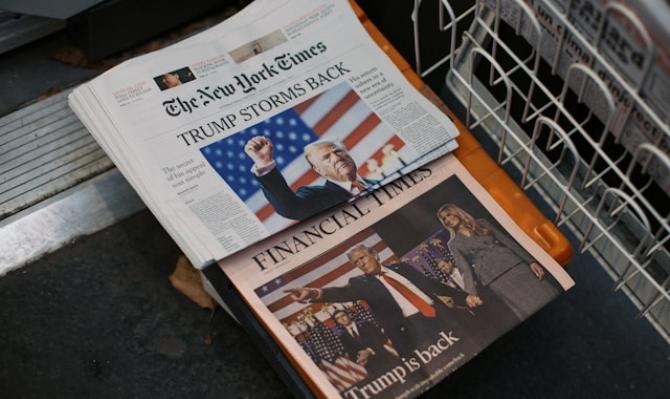Trump tariffs: an own goal?
Trump’s tariffs will not serve to reduce the trade deficit, to recover jobs in sectors in which the US has long lost its competitive advantages or to balance the fiscal deficit. Meanwhile, the price to pay is a return to a fragmented world and the destabilisation of the world economy.

The Trump administration’s announcements of tariff hikes have raised the effective average US tariff on its imports by more than 20 pps, placing them at their highest levels in the last century, although their implementation has been suspended for 90 days (with the exception of China), during which time a universal tariff of 10% will apply. In addition to the arbitrary calculation method used to determine the tariff to be imposed country by country (including some uninhabited islands), the decision will not serve to achieve the objectives of reducing the US’ trade deficit (it stems from over-investment on domestic savings), recovering jobs in sectors in which the US has long lost its competitive advantages or structurally balancing the country’s fiscal deficit. Meanwhile, the price to pay is a return to a fragmented world and an exponential increase in uncertainty surrounding what shape economic and trade policy will take, and this threatens to destabilise the world economy. Therefore, this is decision that falls within the category of negative-sum games, given that it will harm all actors involved, and at the very least this will translate into a scenario with lower global growth and higher inflation in those countries which participate in the protectionist escalation. For now, the performance of the financial markets in the days following the decision – with sharp setbacks in the stock markets, increased volatility and a rebound in credit spreads – reflects the destabilising potential of the measures announced.
It is not easy to look for signals among the noise and the disruption, to discover order in the disorder or to find some pattern of rational behaviour in the face of decisions that are harmful for all players involved in a game which, in theory, should be cooperative, for the sake of maximum efficiency. Just as the evolution of cultures is a continuous search for positive-sum solutions to the inevitable problems that arise from coexistence, advances in economic development are also based on positive-sum games, largely based on each of the players on the economic board harnessing their own competitive advantages. If innovation and the dissemination of knowledge are at the heart of the growth process, then in economies with barriers to foreign competition the factors of production are unlikely to be optimally allocated to leading processes and sectors, and this will limit the growth of productivity and per capita income (a measure in which the US has been a leader in recent decades). This is especially the case in the absence of a stable institutional environment, with proper protection of property rights. This was the widespread consensus among economists, at least up until the now infamous «Liberation Day».
Where do we go from here? The starting point is a challenging one, because shooting oneself in the foot is not what usually comes to mind when talking about the economic policy of the world’s leading power. We are entering a new phase of global uncertainty, as the measures announced could mark a starting point for a multilateral negotiation that brings us closer to a less damaging balance or they could lead to an escalation of trade tensions. In the first scenario, if some kind of agreement is quickly reached involving an average tariff that is substantially lower than the one initially announced, then the collateral damage would be limited, particularly because it would reduce tensions in the financial channel and provide greater certainty to economic agents in order to make decisions. However, in a scenario with a widespread trade war, the world economy will suffer a greater impact with the risk of being accompanied by an inflationary process. In any case, what seems clear is that we are witnessing the final throes of the process known as globalisation and the consolidation of trends such as: geopolitical fragmentation, the search for strategic autonomy, the reconfiguration and shortening of value chains and the forced rebalancing of growth models that are overly dependent on foreign demand (here too, Draghi is right). We may or may not like it, but what has worked in recent decades (the German model?) might not anymore. And the ability and flexibility to adapt to the new environment will determine who is among the winners and the losers, once the cards have been shuffled and the new global balance is reached. For now, the European response (beyond pure trade negotiations) seems to be heading in the right direction, although it is probably insufficient, given the scale of the challenges. It will not be easy to strategically balance relations with the US and China in the short term, especially without improvements in governance. In the meantime, we can expect the ceremony of confusion to continue, among fireworks, liberation days and a lot of noise.




